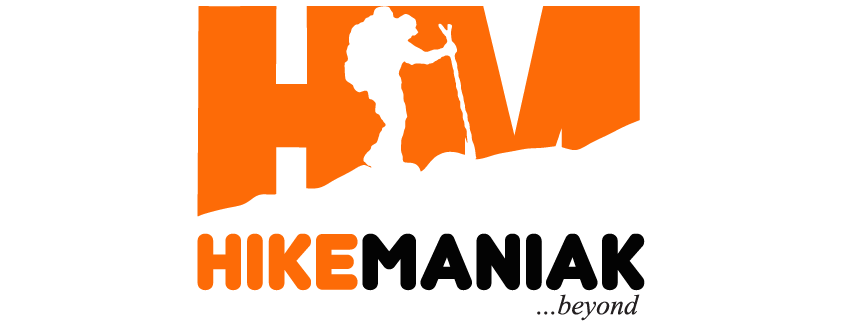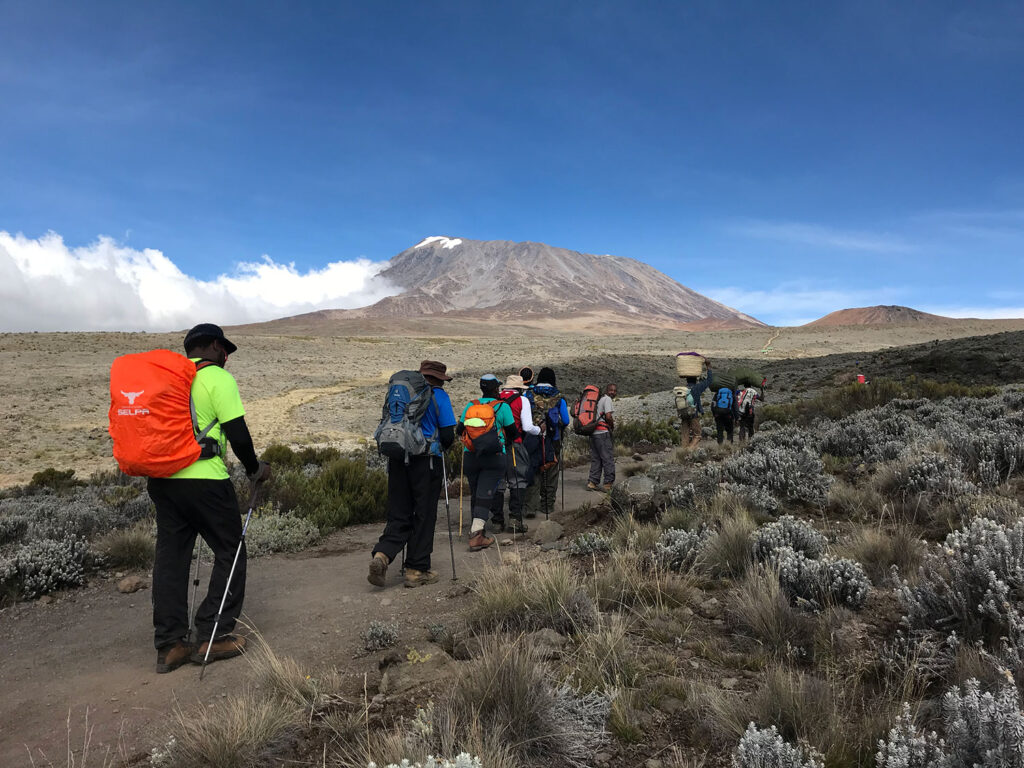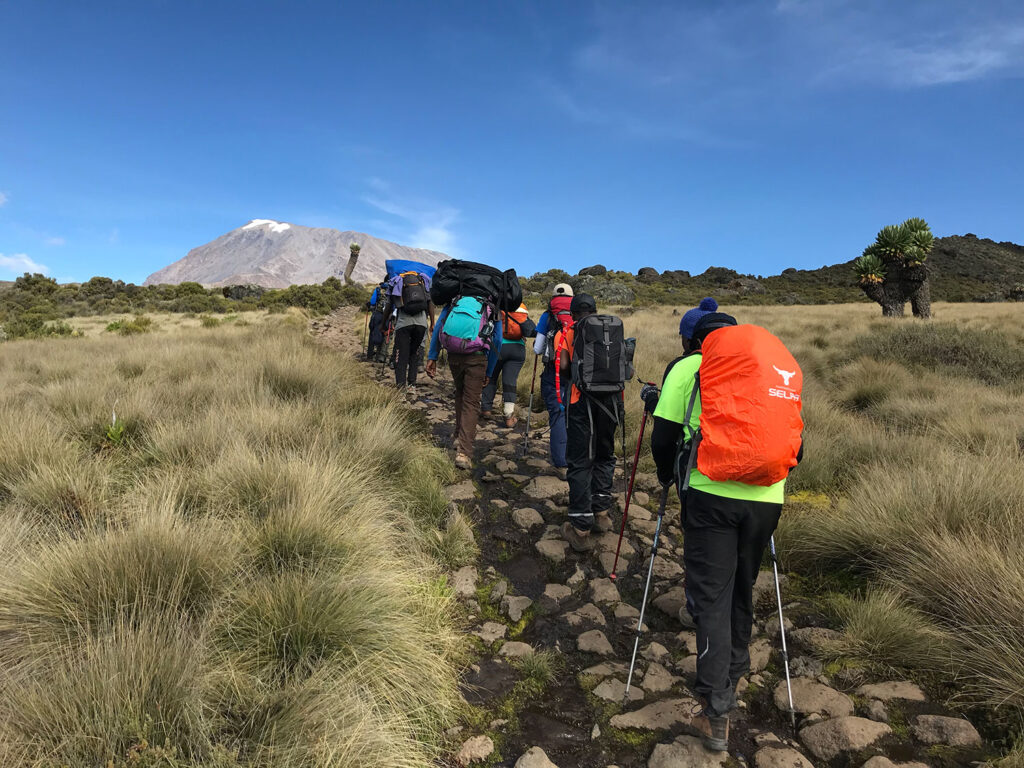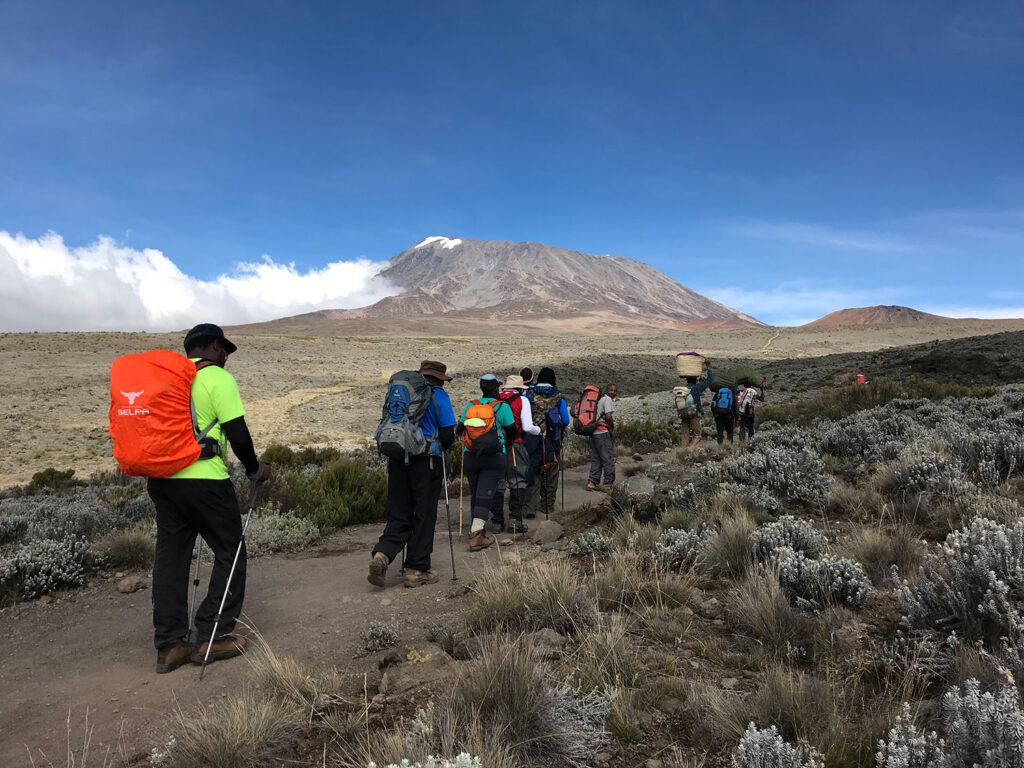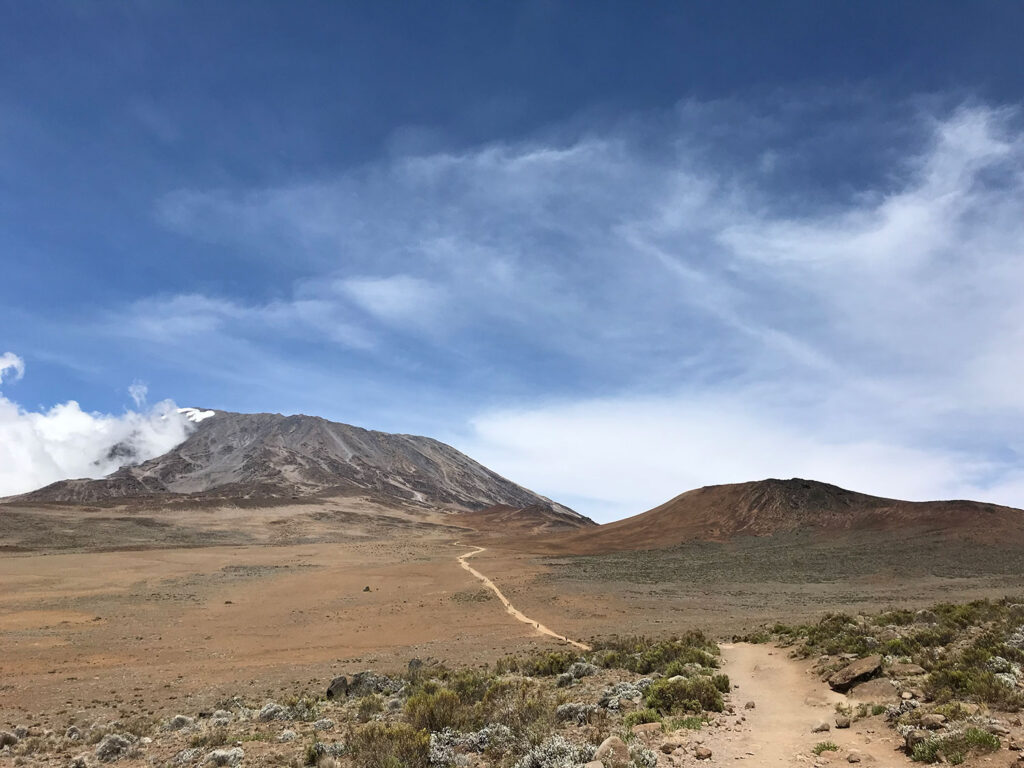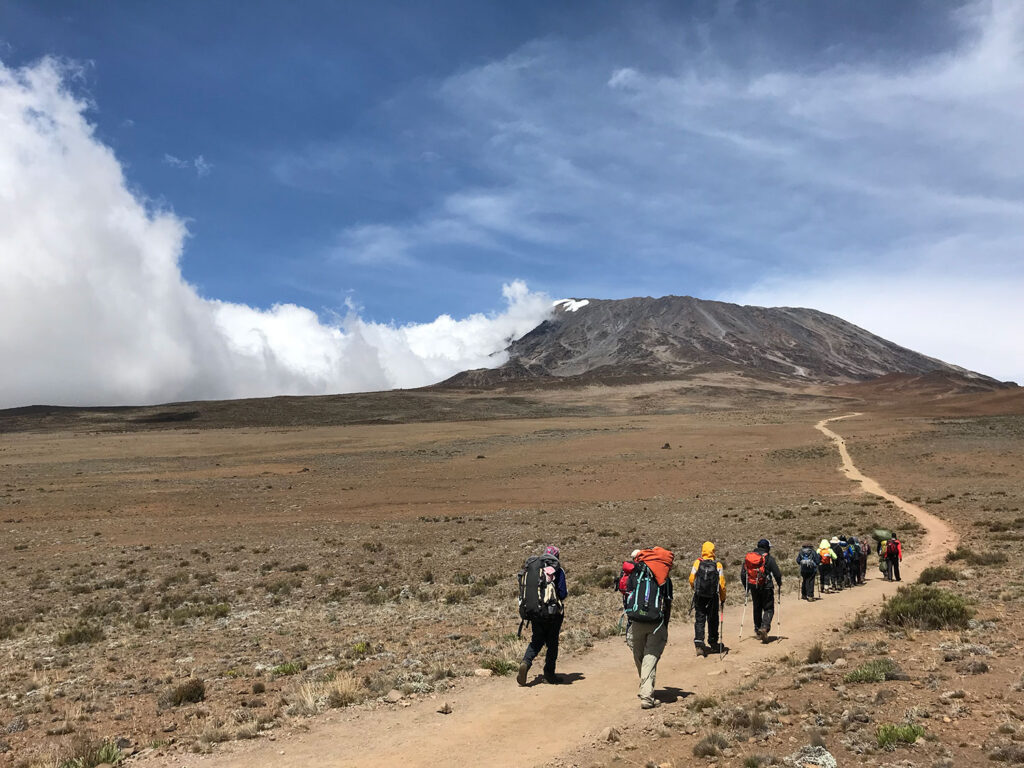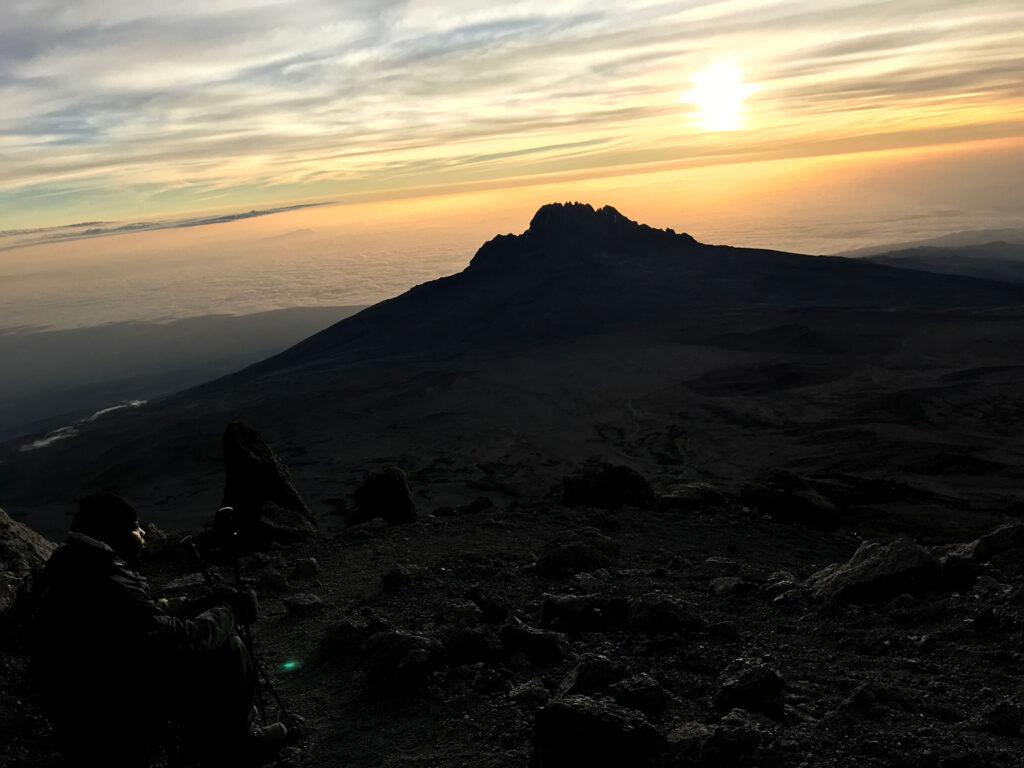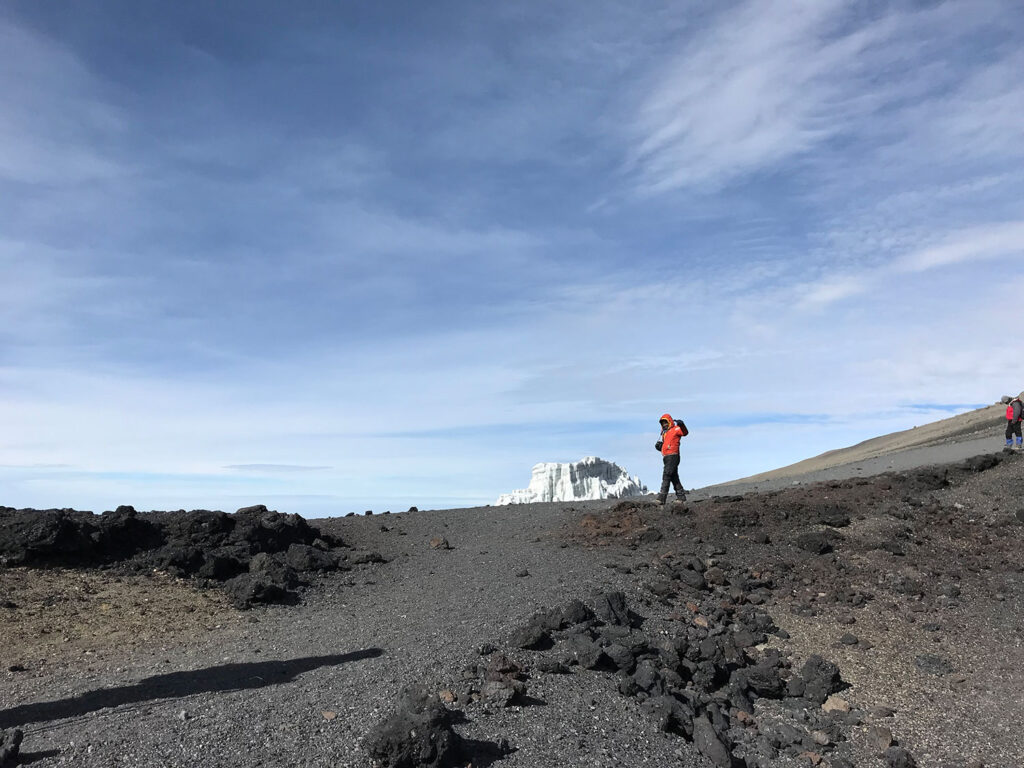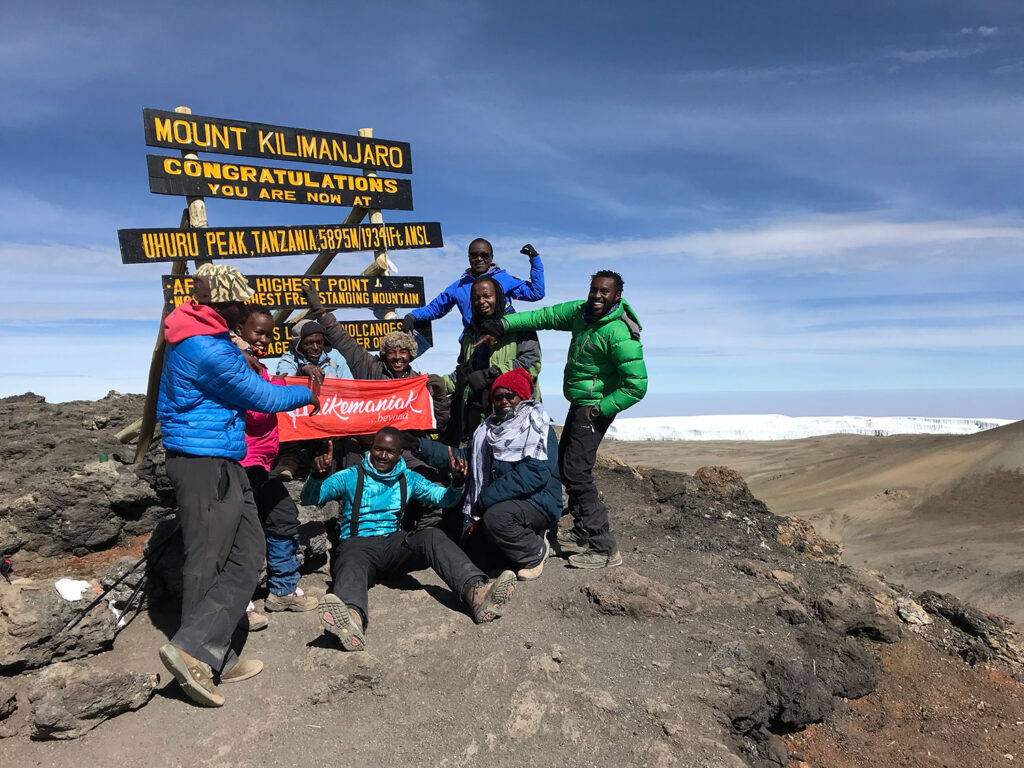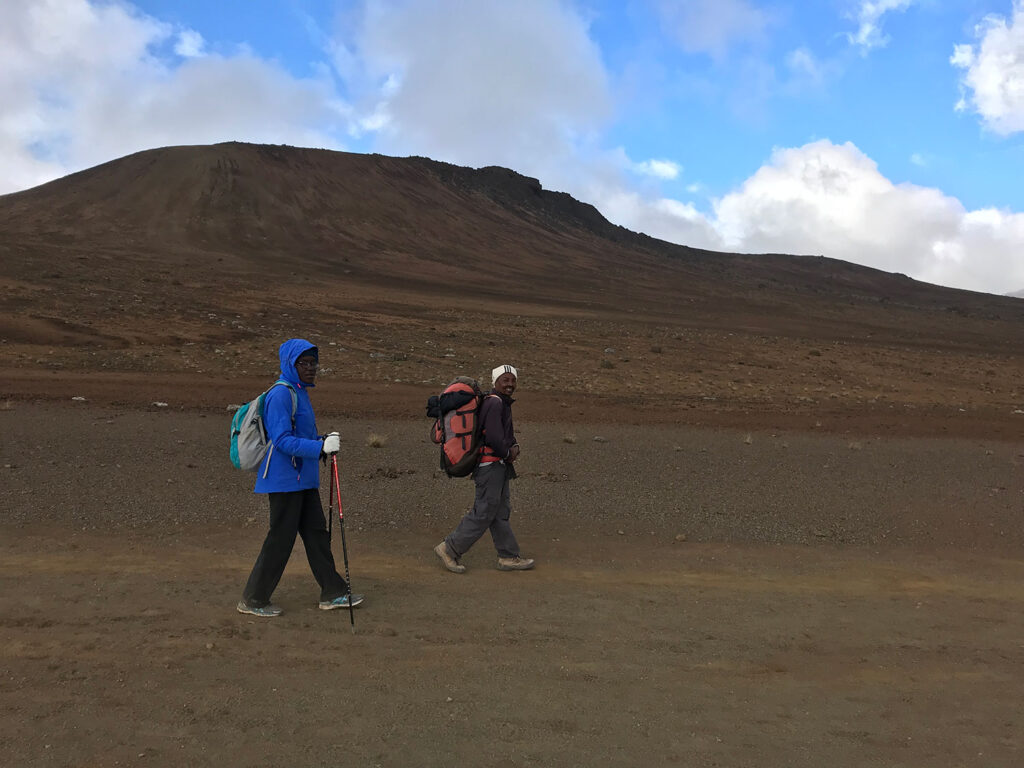The rooftop of Africa, Uhuru peak!!! A sight to behold, There is more to this mountain than the height and the ultimate point itself. Am talking about the 8 days life-changing climb to Uhuru Peak standing at an impressive 5895M above sea level, at first it’s the rain forest, then the moorland, the alpine desert and finally the blinding cotton wool like snow coated peak if you are lucky. A dormant volcano, Kilimanjaro is notable as the highest free-standing mountain in the world, rising over 16,000 feet above its base on the plateau below, and also as the fourth most topographically prominent peak on Earth, after Everest, Aconcagua, and Denali.
Day One;
Travel from Nairobi to Moshi and settle in Keys Hotel. Introduction to our guides, gear check, and briefing about your climb.
Day Two:
Marangu Gate (1860m) – Mandara hut (2715m)
Hiking time: 5h
Distance: Approximately 8.1 km
Habitat: Montane forest
The drive from Moshi to the Kilimanjaro National Park gate takes about 50 minutes. The journey passes through the village of Marangu, which is located on the lower slopes of the mountain. Once you reach the park gate, all hikers are requested to sign in at the Park office and make their final preparations for the climb. Porters will be seen arranging and loading their packs, containing the food, water, cooking gas as well as most of your equipment. Make sure that you have all your daypack items (containing at least drinking water, your lunch pack and extra clothing) with you, as the porters ascend a lot quicker than the hikers.
Your guides will be available to assist with any additional information or needs you might have. You now leave the Park gate and ascend on a cleared ridge trail through the rain forest. The forest, suffused with mist and dripping with beards of moss, is also where most of Kilimanjaro’s animals are found.
An alternative and more scenic parallel forest trail branches off to the left a few minutes after the gate. This trail follows the edge of a stream through the undergrowth and offers you the option to rejoin the main trail either after 1.5 hours hiking, or 1 hour before Mandara hut.
Your first night stop, Mandara hut, consisting of a group of wooden A-framed huts in a forest clearing. Each hut features 6-8 sleeping bunks with solar generated lighting. The total capacity of the camp is 60 climbers. Water is piped into the camp from springs above and there are flush toilets behind the main hut. Dinner is prepared by our cook and served in a communal dining mess.
Day 3:
Mandara hut (2715m) – Horombo hut (3705m)
Hiking time: 6h
Distance: Approximately 11.6 km
Habitat: Moorland
From Mandara hut the trail passes through a short stretch of forest, skirts the base of the Maundi Crater and then emerges into the transition from rain forest to moorland. It is well worth a short detour to scramble up the rim of the Maundi Crater for you are first really impressive view of the Kibo Crater. On a clear day, Kibo will glimmer in the distance, showing off her majestic glaciers in the morning sun.
Once you are in the open moorland you will get the chance to see some of Kilimanjaro’s most spectacular plants – the endemic giant lobelia which grows up to 3 m in height and the giant groundsel (Senecia Kilimanjari), which can reach heights of 5m! After about 6 hours trek from here, you reach the Horombo hut, where you will have a hot bowl of washing water, rest; an evening meal and overnight.
Day 4
Acclimatization day at Horombo Hut; After breakfast, we do a relaxed hike up to 4000m exploring the zebra rocks and then back to camp for lunch and restful afternoon.
Day 5
Horombo hut (3705m) – Kibo hut (4730m)
Hiking time: 6h Distance: Approximately 9.6 km
Habitat: Alpine desert
After breakfast, we continue your ascent into the Alpine desert habitat. From Horombo there are two trails to the “Saddle” (which refers to the area located between the peaks of Mawenzi and Kibo). There is an upper route (right-hand fork) and lower route (left hand fork) to choose from. The upper route (right-hand fork) should be very familiar, as you will have climbed most of it the previous day (on your acclimatization hike) towards Mawenzi hut. This section is very stony and eroded.
The recommended lower route (left hand fork) is much easier and nearly an hour shorter, and it also passes the last watering point at 4130m. You will have to fill your water bottles with all the water you will need until your return to Horombo hut in two night’s time (unless you are willing to buy Mineral water at Kibo hut). Once again remember to slow down and drink enough water!
Situated in the barren Alpine desert is Kibo hut, a stone build block house which has bunk beds for 60 climbers, but no streams with water nearby. It is, however, possible to buy mineral water and soft drinks at the camp office. There are platform toilets behind the hut.
The summit is now a further 1195m up and you will make your final ascent the same night. Prepare your equipment, ski-stick and thermal clothing for your summit bid. This should include the replacement of your headlamp and camera batteries and make sure you have a spare set available as well. To prevent freezing it will be wise to carry your water in a thermal flask. Go to bed at round about 19h00 and try to get as much rest and sleep as possible.
Day 6:
Kibo hut (4730m) – Uhuru Peak (5895m) – Horombo hut (3705m)
Hiking time: 7 to 8 hours to reach Uhuru Peak, 6 to 8 hours to descend to Horombo
Distance: Approximately 5.4km ascent and 15 km descent
Habitat: Stone scree and ice-capped summit
You will rise around 23h20, and after some tea and biscuits you shuffle off into the night, and this is where the going really gets tough. The first section of the trail consists of a rocky path to the Hans Meyer Cave (5150m), also a good resting spot. The path then zigzags up to Gillman’s point (5 681m), which is located on the crater rim. This section is very steep with a lot of stone scree, requiring a great physical and mental effort. This is probably the most demanding section of the entire route. Do the Kili shuffle and move slowly.
From Gillmans Point you might encounter snow all the way up to Uhuru peak (5895m), the highest point in Africa. Total exhilaration and satisfaction – we made it. Weather conditions on the summit will determine how long you will be able to spend, taking photographs, before the 3 hour descent back to Kibo hut. After a short rest you gather all your gear you left behind for the ascent and head down to Horombo hut (3 hours) for your overnight. The return to Horombo hut will seem surprisingly fast compared to the ascent. The total time spent walking on this day is around 14 hours, so be prepared for a very tough day. Later in the evening you enjoy your last dinner (with soft drinks and beer for sale at the camp office) on the mountain and a well-earned sleep, filled with memories and stirring emotions.
Day 7:
Horombo hut (3705m) – Marangu Gate (1860m). Hiking time: 6h
Distance: Approximately 19.7 km
After breakfast you continue your descent (6 hours), passing the Mandara hut, down to the Marangu gate. It is strongly recommended not to pay your porters any tips until you and all your gear have reached the gate safely. Click here for more info on tips. At Marangu gate you sign your name and details in a register. This is also where successful climbers receive their summit certificates. Those climbers who reached Gillman’s Point (5685m) are issued with green certificates and those who reached Uhuru Peak (5895m), receive gold certificates. You now drive back to Moshi for a long overdue hot shower and celebrations!! Overnight at the Keys Hotel Moshi
Day 8: Travel back to Nairobi from Moshi expected to arrive late in the afternoon.
Visa Application
For EA Citizens- you will only need your passport or temporary travel paper issued by the Immigration Department. For Non-EA kindly apply for your Tanzanian visa at least 10 days working before the trip. Here is the link https://visa.immigration.go.tz/start
Yellow Fever Certificate/Covid Vaccination
Ensure you have a valid Yellow fever and COVID Vaccination Certificates
Currency:
(https://www.xe.com/currencyconverter/convert/?Amount=1&From=USD&To=TZS ) you can monitor here the exchange rate here. Always change money at the authorized dealers
Water on the trail
You usually source from the streams on the trail, kindly carry some water purifier tablets if you have a sensitive stomach- highly recommended
Tips
There is a tipping culture here in Kilimanjaro and there is an expectation from the guides to the porters to get a tip from the climber. We recommend $15 per day for the guide; $12 per day for the chef; and $5-$8 per day for each porter. The final decision on how much to tip is up to you and depends on the services you received.
High Altitude Sickness
If you are coming from low altitude- or not well acclimatized – despite Rongai being a gradual and most recommended route for those coming from low altitudes. You may also need to carry Diamox(it may have a different name in your country) – a medication that helps with reducing the effects of high altitude. NB: Ask your physician to prescribe the dosage.
